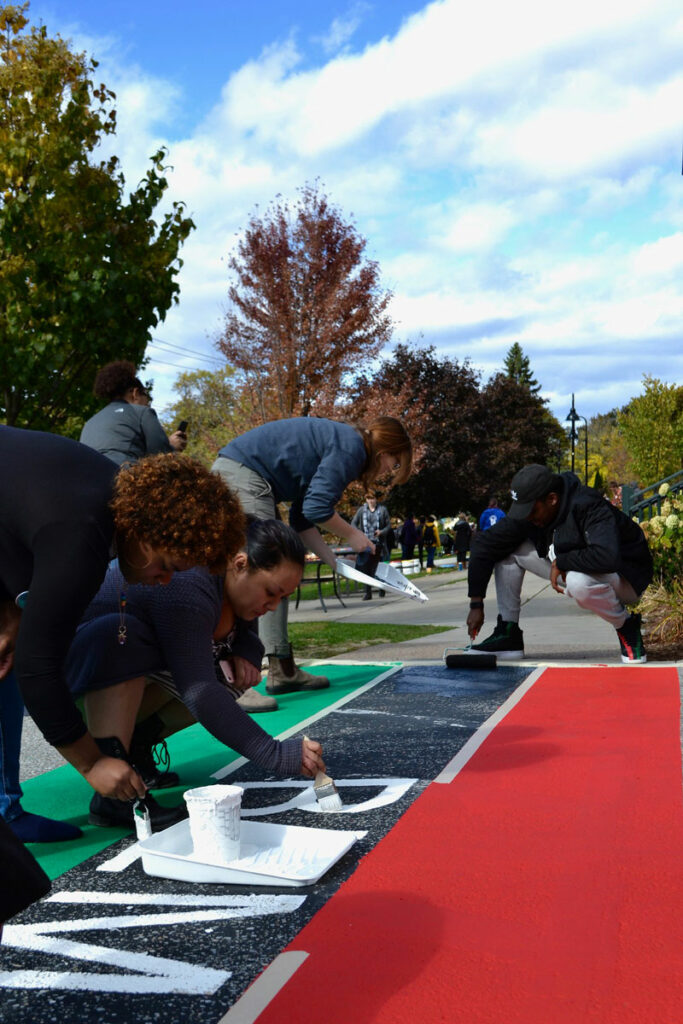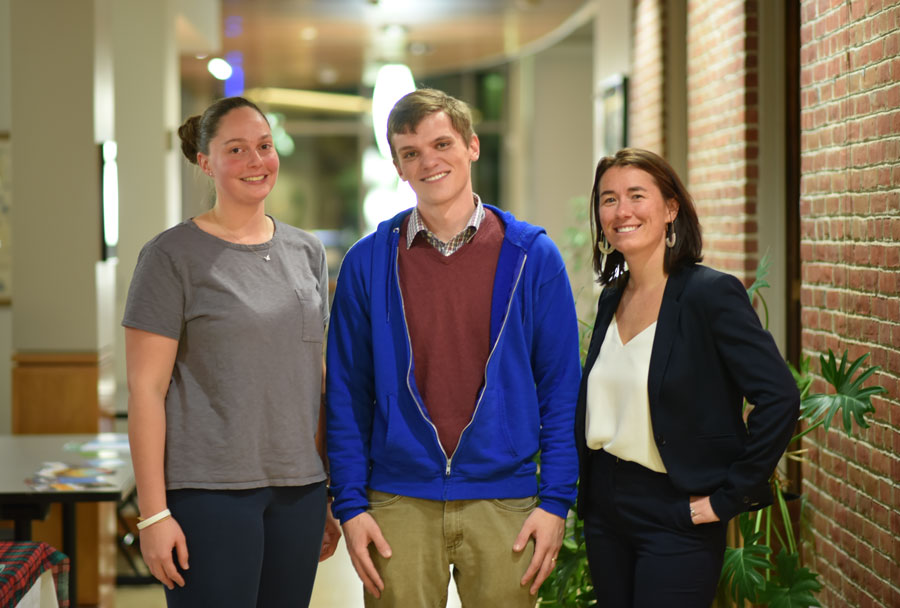As a college with a Criminal Justice major, we share responsibility in shaping the field of criminal justice—student by student, course by course—and we won’t remain silent amid the national discourse about policing and criminal justice systems.
After adding social justice course requirements to our Criminal Justice curriculum last year, we are committed to continuing positive change within our program and are hopeful that the current conversations happening in local and national communities will effect systemic change at a broader level.
“Systemic racism exists,” explains Tony Perriello, J.D., Program Director of the Criminal Justice program here at Champlain. “We have seen recordings of people dying at the hands of police, we have seen recordings of police responding with violence to peaceful protesters. And while the problem is now most visible at the level of policing, it exists at every level of the system: in law enforcement ranks, in criminal justice administration, in the court system, and in corrections.”
While the problem is now most visible at the level of policing, it exists at every level of the system: in law enforcement ranks, in criminal justice administration, in the court system, and in corrections.
Tony Perriello, Criminal Justice Program Director
To be clear, that the problem is systemic does not mean that there are no good people working to change the system from within it. Here in Vermont, there are lots of people working for change from within the system, and some teach here in the program. They’re making an impact every day.
Perriello points out that the recent and ongoing protests were sparked by the murder of George Floyd, but are “about so much more. They’re about the pervasive and unaddressed injustice and inequality in the system.”
Police brutality is enmeshed with a larger problem, as Perriello puts it. “It is intricately connected to a systemic problem. That systemic problem is tied to issues related to white supremacy and white privilege—and that is a problem with immediate impact, but one that is going to take a lot longer to unravel and fix. But it’s got to get done.”
Violent police transgressions have been hard to prosecute, in part because the system is set up to support police officers. Fellow officers may hesitate to report or call out colleagues, and police unions have a mission to protect their members and negotiate on behalf of the accused. In recent years, the horrific deaths of Black men, women, and children at the hands of police have often been covered in the news and met with outrage, but not real change.


This time might be different.
In Minneapolis, Minnesota—where George Floyd, Thurman Blevins, and Philando Castile were killed—the City Council recently announced plans to ultimately dismantle its police department. Though the Minneapolis City Council had made efforts to reform police procedures, City Council President Lisa Bender told The Appeal that those efforts have failed.
“We don’t have a lot of details about what that will look like,” says Perriello. “I don’t know that defunding is the answer, but I don’t know that it isn’t.”
Defunding and dismantling a city police department is not something that happens overnight. Some kind of criminal justice structure will be needed, even while Minneapolis shifts its budget away from policing and toward positive community-building. Minneapolis Police Chief Medaria Arradondo stated in a press conference that “until there is a robust plan that ensures the safety of our residents, I will not leave them.”
While many Americans are calling for a complete dismantling of police systems, others are demanding significant reform. Do we pare back the budget for riot gear and militarization, and spend more on social work and rehabilitative efforts? Do we give up the previous model entirely, and start building preventative safety measures from the ground up?
Communities throughout the United States are watching Minneapolis to learn what form their new model of public safety will take.
Where do we go from here, as municipalities and states and a nation?
“Communication is key,” according to Perriello. Communication among residents and the law enforcement community, among constituents and their representatives.
Perriello paraphrases Barack Obama’s recent statement on Medium.com, suggesting “protest, then vote.”
So the bottom line is this: if we want to bring about real change, then the choice isn’t between protest and politics. We have to do both. We have to mobilize to raise awareness, and we have to organize and cast our ballots to make sure that we elect candidates who will act on reform.
Barack Obama on Medium
“We need to figure out what we want to do, and that can only happen through communication. Then we need to exert pressure on the government to make the changes that are required, and that comes from voting,” Perriello advises.
Where does your mayor stand on police reform? Does your town have a police advisory committee or oversight board?
While federal elections are incredibly important, if you’re interested in seeing systemic change to policing and criminal justice then you must cast your ballot in town and state votes as well.
What is Champlain College doing to create change?
Tony Perriello and the faculty in our Criminal Justice program have been in close contact with students currently in our program as well as recent graduates. The Champlain criminal justice community is engaging in difficult conversations about police brutality, reform, and systemic racism.
Last year, Perriello and program faculty adjusted the curriculum to open up easier pathways to careers in the field that aren’t law enforcement roles. The curriculum now requires fewer operations courses and contains more criminal justice electives—students can choose their focus, and social justice is an integral component of the major. You can view the full Criminal Justice curriculum here.
While these changes include a focus on social justice and restorative justice avenues, “I think the program is going to have to change even more,” Perriello predicts. “There’s no way that it won’t. But it is well positioned to make the next round of changes.”


In light of current conversations in local and national forums, Perriello is maintaining open lines of communication with the program’s adjunct faculty like Sarah George (Chittenden County State’s Attorney) and TJ Donovan (Vermont Attorney General), as well as many law enforcement professionals who teach in the program.
Perriello has also been working closely with Champlain Social Work Program Director Patti Aldredge, and we will share the results of that partnership once the curricular effects are approved by all parties.
“We have to be ready for change,” says Perriello, “and I think we are.”